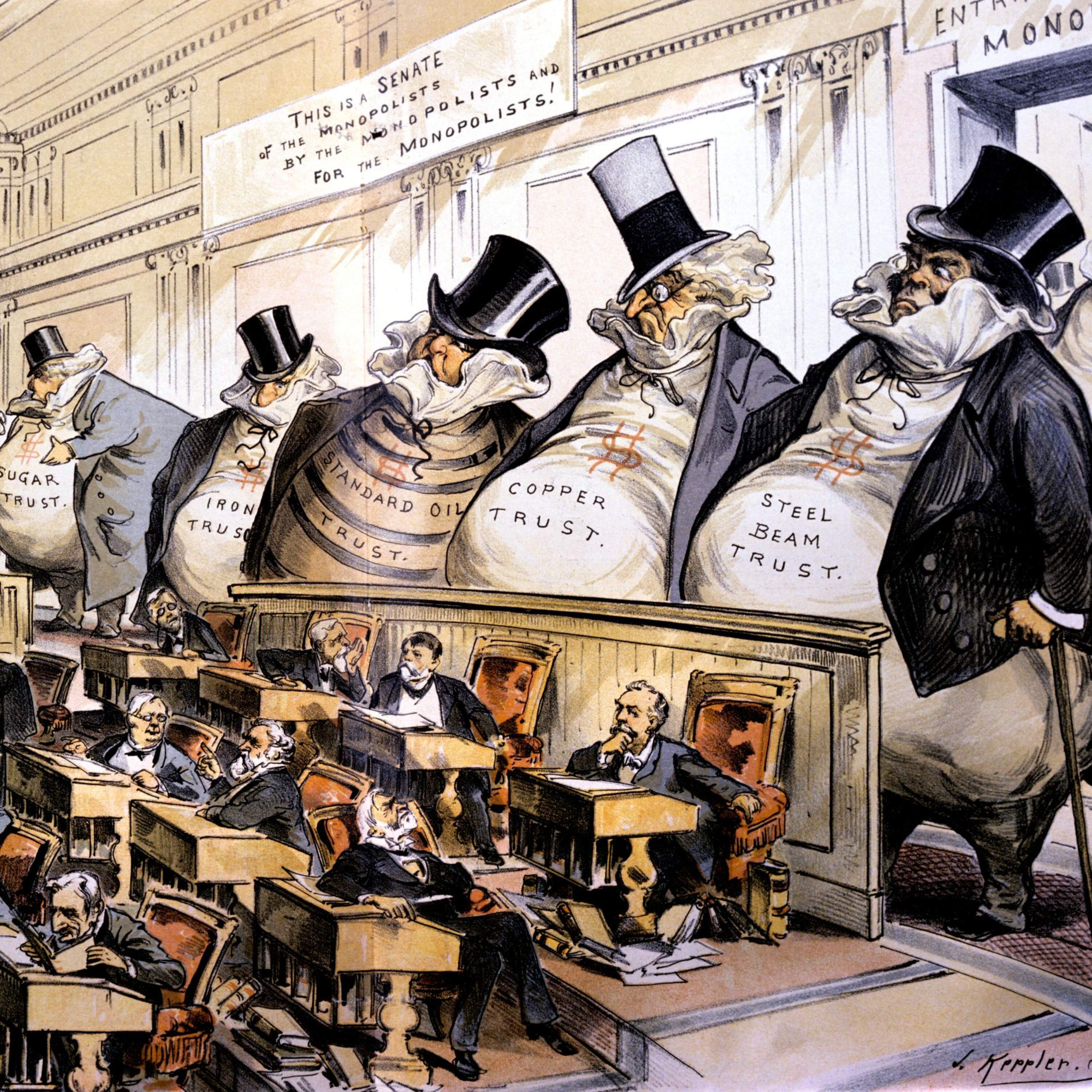When cartels start to diversify
The Sinaloa Cartel made the bulk of its money on cocaine. But cartels are diversifying into new operations including things like wildlife trafficking. Think sharks, jaguars, capybaras. The result is something called “narco-degradation.” On today’s show, we look at what’s driving cartels beyond drugs and how this is wreaking havoc on ecosystems in Central America.
Related episodes:
Can breaking the law be good for business?
Waste Land
Will Economic Growth Destroy the Planet? For sponsor-free episodes of The Indicator from Planet Money, subscribe to Planet Money+ via Apple Podcasts or at plus.npr.org. Fact-checking by Sierra Juarez. Music by Drop Electric. Find us: TikTok, Instagram, Facebook, Newsletter.
Learn more about sponsor message choices: podcastchoices.com/adchoices
NPR Privacy Policy
Press play and read along
Transcript
NPR.
This is the indicator from Planet Money. I'm Adrienne Ma.
And I'm Waylon Wong.
In May of this year, along the Pacific coast of Costa Rica, federal law enforcement officials chased down a vehicle that tried to flee a highway checkpoint.
When police searched the car, they found crack cocaine, marijuana, and five capybaras. Bet you didn't see that coming.
No. I mean, think of a 170-pound guinea pig with partially webbed feet.
And these things are kind of social media famous for being cute. And they're also part of a growing illegal exotic animal trade.
Costa Rican authorities said this seizure was the country's first recorded case of capybara trafficking.
Wildlife trafficking is a business that is increasingly intersecting with the illicit drug trade as cartels diversify their operations. The result is something called narco-degradation.
This refers to environmental harm caused by the illegal trade in cocaine and other drugs. This week on The Indicator, we're bringing you a special series on the evolving business of crime.
On today's show, we look at what's driving cartels to expand into areas beyond drugs and how this is wreaking havoc on ecosystems in Central America.
This message comes from LinkedIn Ads. One of the hardest parts about B2B marketing is reaching the right audience.
That's why you need LinkedIn ads.
You can target your buyers by job title, company, role, seniority, and skills. All the professionals you need to reach in one place.
Get a $250 credit on your next campaign so you can try it yourself.
Just go to linkedin.com slash nprpod. That's linkedin.com slash nprpod.
Terms and conditions apply. Only on LinkedIn Ads.
This message comes from Amazon Business. How can you grow your business from idea to industry leader? Bring your vision to life with smart business buying tools and technology from Amazon Business.
Simplify how you stock up to get ahead. Go to AmazonBusiness.com for support.
This message comes from Amazon Business. Free your team from time-consuming office tasks with smart business buying tools.
Enable buyers to find and purchase items fast.
Learn more about the technology, insights, and support available at AmazonBusiness.com.
American demand for cocaine and fentanyl has driven the transnational drug trade to new levels. Within that industry, Mexican cartels are among the top traffickers of cocaine into the U.S.
And they're some of the biggest producers of synthetic drugs like fentanyl that accounted for around 60% of overdose deaths in the U.S. last year.
The two major Mexican cartels are Sinaloa and Cartel Jalisco Nueva Generación, or Jalisco for short. Douglas Farah has been following these cartels for years.
He's a former journalist who went on to start a security consulting firm in Latin America called IBI Consultants. And in his line of work, things are changing all the time.
He's reminded of the 20th century British philosopher and mathematician Bertrand Russell. I think as Bertrand Russell said, you have to constantly re-examine your assumptions.
What you always held to be true may no longer be true. Douglas says, when it comes to how Mexican cartels have evolved, Jalisco developed a particular strategy that set it apart from Sinaloa.
If you did anything illicit in their territory, prostitution, gambling, kidnapping, whatever it was, they got a piece of it.
And so that gave them a multi-source of revenue coming in besides cocaine, although cocaine is obviously incredibly important to them. And they've also been incredibly flexible.
They've been able to adapt to situations, see new opportunities in ways that the Sinaloa cartel perhaps was much slower to recognize or some of the other trafficking organizations.
And by territory, Douglas is talking about huge swaths of land in countries like Ecuador, Guatemala, and Peru.
Jalisco recruited local gangs to hold that territory, and these smaller gangs are often involved in their own illicit activities, like selling fake pharmaceuticals and contraband cigarettes.
The cartel, of course, gets a cut of that business. Douglas says economic conditions in Central America have made it easier for Mexican cartels to recruit these foot soldiers.
There's poverty and a lack of job opportunities in the region, especially in the formal sector.
Douglas has met people who termed the cartel for a loan, maybe to cover a medical bill, and then had to work off that debt.
So you have somebody who says, okay, $500 to move this package from here to here. It's not that people are looking to get involved in transnational organized crime.
They're looking around for survival. It's a recognition of the reality of the fragile state of economics and particularly in democracies across the region.
These local groups also help cartels like Jalisco claim additional territory. In Ecuador, for example, cartels from Mexico, Colombia, and even Europe have fought over control of Ecuador's ports.
And they rely on local gangs for that muscle. So it's sort of like an open bidding process.
I say, oh, I can do it. And so I will kill anyone who gets in my way to provide that access to that port.
So you have these huge spikes of violence. And then two weeks later, there'll be zero homicides in that particular area again because somebody won that war.
And that territory is now secure.
So the fight will now move two kilometers away. So it's almost day by day and route by route.
The way you speak about it is in economic terms, like it's a bidding war, right?
So what is the price of securing this particular piece of infrastructure, the port that you need to move your product? And the price that's paid is in is in human lives. That's exactly right.
So I think it's very capitalistic. It's all mercantile or transactional.
What can you do for me today? If you can do this for me today, then we're good for today.
And if you can't do it tomorrow, I may need to kill you or I'll find someone else.
The fight for regional territory and the expansion of illicit activity have brought a new level of violence to countries like Ecuador and Costa Rica.
There's also been a heavy toll on the ecosystems in the region.
Bernardo Aguilar Gonzalez is a lawyer and consultant who's been studying the impact of narcoactivity on the environment for the last decade, although he describes his job in more evocative terms.
As a profession, I am a platypus. You know, a platypus is a mammal, but it also has a duck bill and lays eggs.
And Bernardo has a PhD in natural sciences, but also a law degree and a a master's in economics so he's like an academic platypus.
I had a different image in my head at first so thank you for explaining that.
Bernardo's interests have kind of coalesced into this study of narco-degradation and one example of this phenomenon is deforestation in Central America.
So researchers noticed a patch of cleared land here and a patch of cleared land there in the tropical forests there. And then they noticed that these patches would expand and join up.
It was larger tracts that would require normally more capital in order to actually clear that sort of space. In other words, whoever was clearing this land had resources.
Researchers eventually figured out that cartels were cutting down trees to build cattle ranches that would be used to launder illegal drug money.
Bernardo says cartels are also using this land for unauthorized gold mining and logging, as well as for transportation and storage of drugs.
One of the patterns that we found is that in mangrove areas in Costa Rica, for instance, they use the rooting systems in order to actually store the packs of cocaine.
One study from 2017 estimated that in the previous decade, cocaine trafficking accounted for up to 30% of deforestation in Honduras, Guatemala, and Nicaragua.
Much of this loss happened within nationally and internationally protected areas. There's also wildlife trafficking and the illegal trade in exotic pets.
Bernardo says the most common animals that get caught up in this are the smaller ones, like amphibians and birds. But remember those five capy barras that were seized in Costa Rica?
That suggests that wildlife trafficking is expanding. You're starting to see
more
exotic things coming through or going out of here in order to be sold either privately or, you know, to tricky pet shops. And this narco-degradation is difficult to stamp out.
Bernardo says one reason is that historically, governments have treated conservation and law enforcement as separate issues.
The governments of the region do not have the budget to actually cover every single inch of the forested areas that exist in the country.
And the security institutions do not have the knowledge of the ecosystems as to be able to perform in the most efficient way.
The result is that park rangers aren't always equipped to patrol these protected forests in the same way police officers are.
And a police officer may not have the kind of expertise that would help identify whether a track in the forest was made by a wild animal or a trespassing human.
Bernardo says there have been some arrests and prosecutions of illegal cattle ranchers, and he says indigenous communities have been instrumental too.
In Guatemala, for example, the government has been working with locals to reclaim land in a protected area called the Maya Biosphere Reserve.
As for those five capybaras, they were taken to a wildlife rescue center in Costa Rica in pretty rough shape.
One of them unfortunately died, though the remaining four got better and were moved into a new habitat. And actually, if you want to, you can visit them.
Tomorrow in our Vice series, we bring you an episode on the threat of AI in manipulating financial markets.
This episode was produced by Cooper Katz McKim with engineering by Robert Rodriguez, with fact-checked by Sierra Juarez. Kicking Canon is our editor, and the Indicator is a production of NPR.
Support for NPR and the following message come from Edward Jones. A rich life isn't always a straight line.
Unexpected turns can bring new possibilities.
With a hundred years of experience navigating ups and downs, Edward Jones can help guide you. Let's find your rich together.
Edward Jones, member SIPC.
This message comes from NPR sponsor Charles Schwab with its original podcast On Investing.
Each week, hosts Lizanne Saunders, Schwab's chief investment strategist, and Kathy Jones, Schwab's chief fixed income strategist, along with their guests, analyze economic developments and bring context to conversations around stocks, fixed income, the economy, and more.
Download the latest episode and subscribe at schwab.com slash on investing or wherever you get your podcasts.
This message comes from Warpy Parker, Prescription eyewear that's expertly crafted and unexpectedly affordable.
Glasses designed in-house from premium materials starting at just $95, including prescription lenses. Stop by a Warpy Parker store near you.





